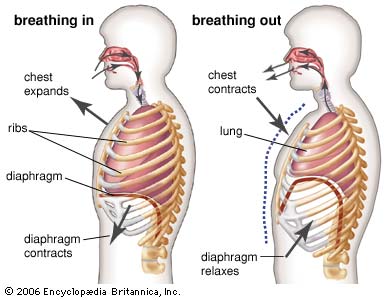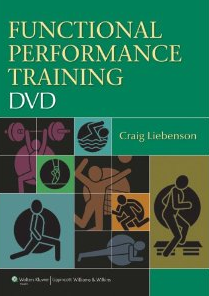Postural Function of the Diaphragm in Persons With and Without Chronic Low Back Pain
by Pavel Kolar et al.
Excerpt taken from JOSPT, April 2012, Vol 42, Number 4 p. 352.

Despite the high prevalence of low back pain in the population, options regarding effective treatment strategies are still limited, possibly due to the lack of knowledge of the underlying mechanisms.9 Trunk stabilization and postural trunk control may play an important role in the etiology of low back pain.9 In turn, the function of the diaphragm may affect how the trunk is stabilized, especially during postural activity.11,15,22 Various studies have shown that the pelvic girdle and lumbar spine are reflexively stabilized and braced prior to the initiation of extremity movements.3,13,17,22 The central nervous system must be able to anticipate movement and stabilize the entire core musculature automatically to provide a stable base from which the muscles performing the movement can pull.
Trunk bracing maintains all spinal segments in a biomechanically neutral position during the course of any movement. Segmental movement (eg, hip joint movement) is therefore related to the synergistic activity of the spinal extensors and all the muscles modulating intra-abdominal pressure (ie, abdominal muscles, the diaphragm, and the pelvic floor). The diaphragm is the muscle that contributes the intra-abdominal pressure modulation and plays an important role in spinal stability.7,16,18,27,31
Insufficient function and poor coordination of postural, or stabilizing, muscles are considered to be important etiological factors in spinal disorders associated with low back pain, such as deformational spondyloarthrosis (with or without spinal disc herniation), spinal disc protrusion, and/or spondylolisthesis.5,12,21,25
Continue to read the remainder of this article by clicking HERE.
CONCLUSION
We found reduced diaphragm movement when isometric flexion against resistance of the upper or lower extremities was applied. The combined, more cranial position in the anterior and middle portions of the diaphragm and, particularly, the steeper slope between the middle and crural portions of the diaphragm in patients with chronic low back pain may contribute to low back pain symptoms. However, given that the results are based on crosssectional analysis, we cannot exclude the possibility of reverse causation. Still, the results support the theory that patients with low back pain complaints present with compromised diaphragm function,
which may play an important role in postural stability.
KEY POINTS
FINDINGS: We found reduced diaphragm movement in patients with chronic low back pain compared to healthy controls when isometric flexion against resistance of the upper or lower extremity was applied, mainly in the anterior and middle portions. This pattern of diaphragmatic recruitment resulted in a steeper angle in the middle-posterior part of the diaphragm and likely a greater strain during activity on the ventral region of the spinal column.



